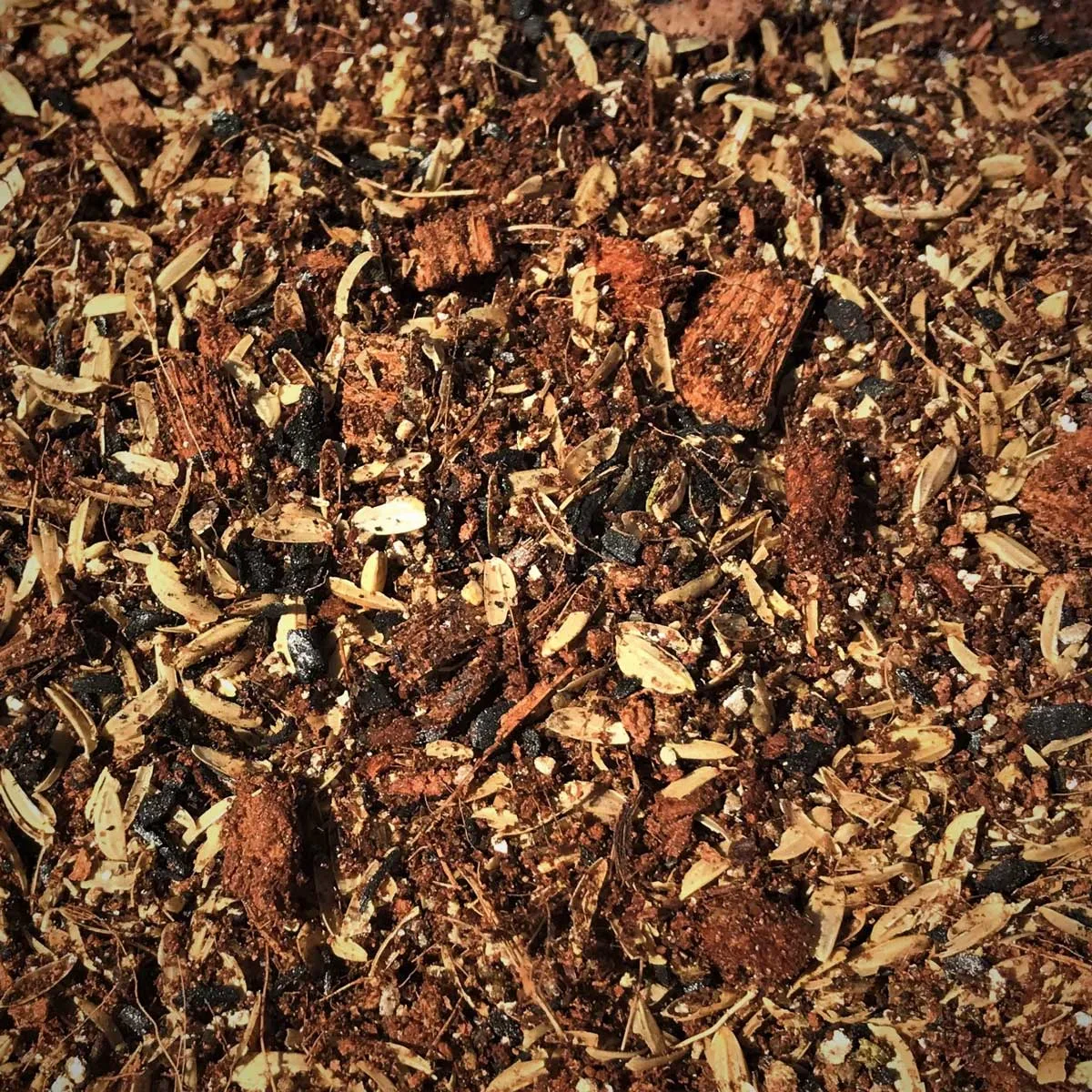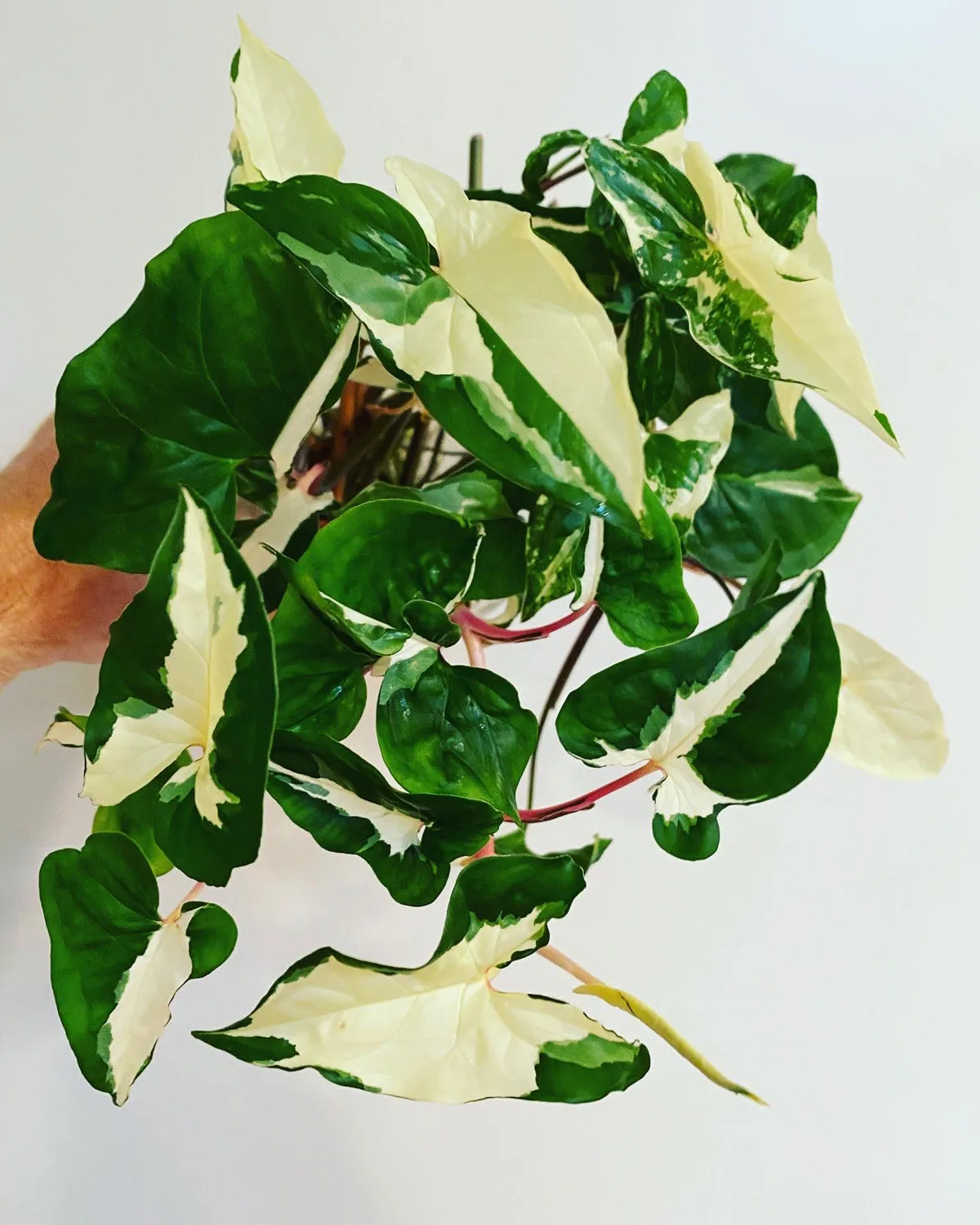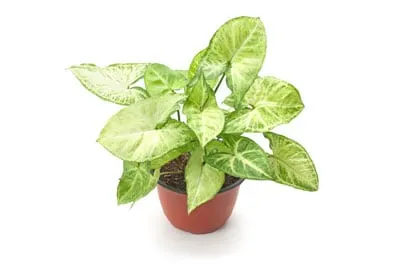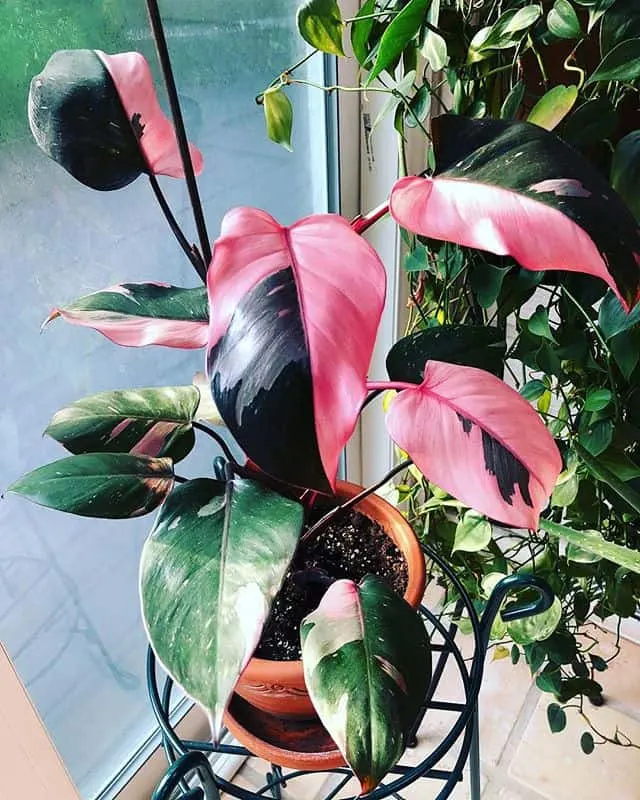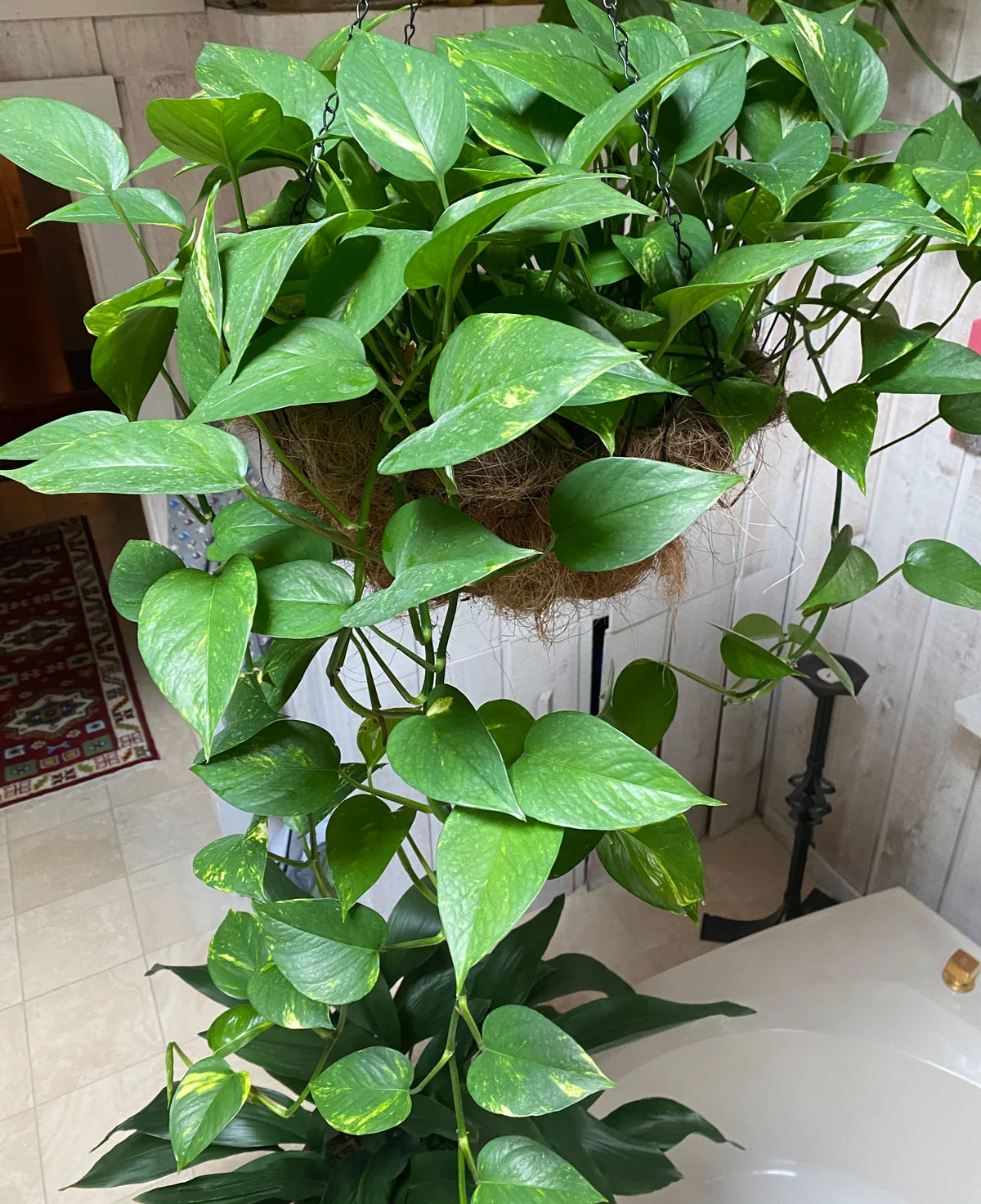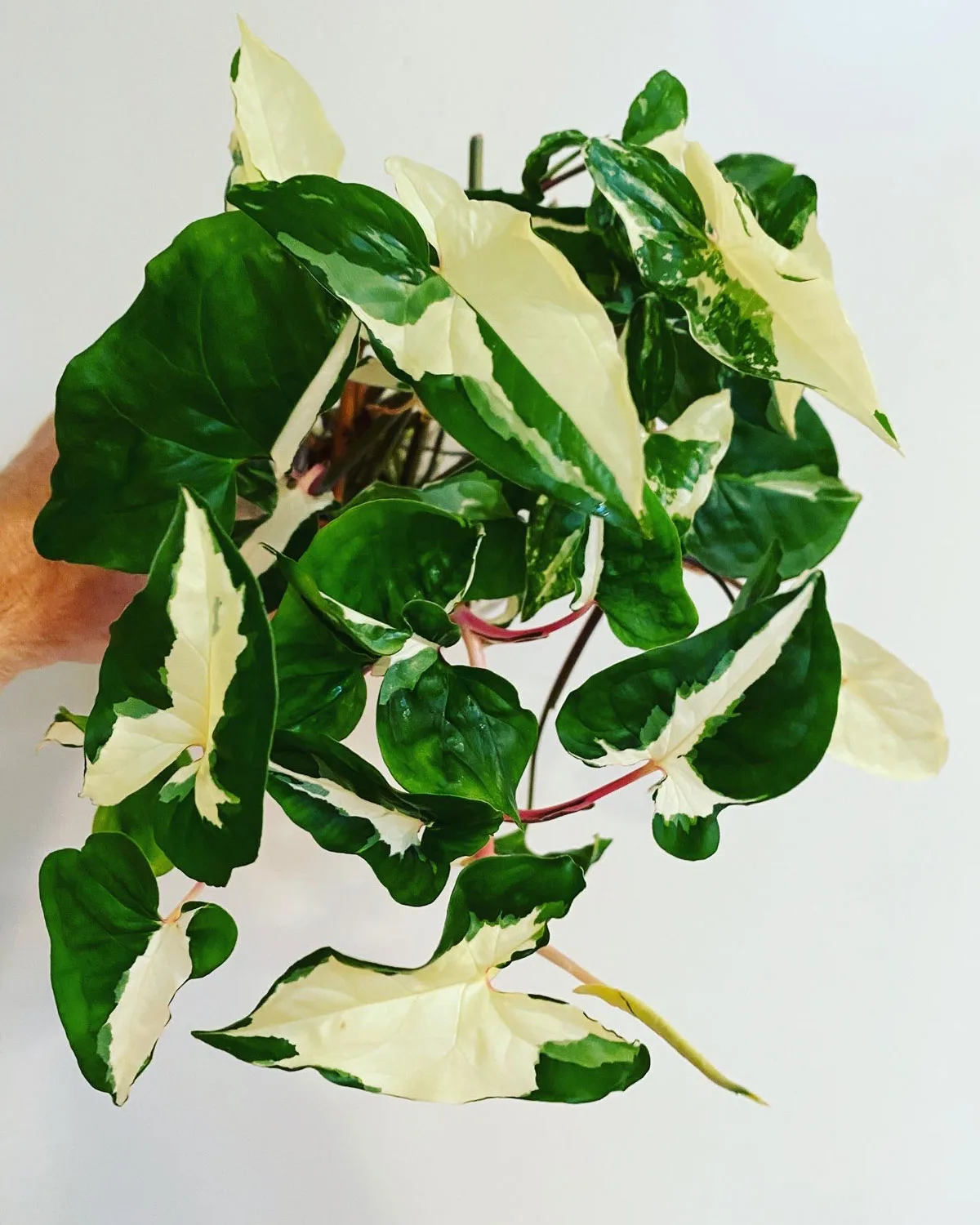Some of the links in this post may be affiliate links.
If you’re crazy about pink plants, look no further than the pink Syngonium. Commonly known as pink arrowhead plant, these make for wonderful indoor plants and their unique color really adds a special touch to your plant collection. Keep reading to learn all about how to care for the beautiful pink Syngonium.
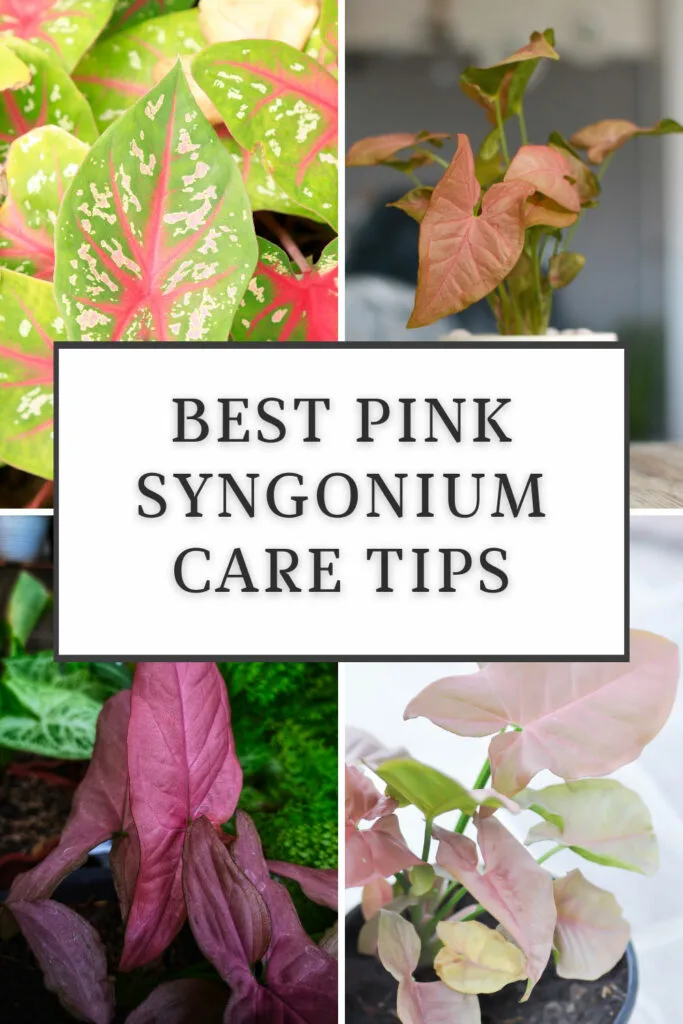
Table of Contents
PINK SYNGONIUM CARE
Syngonium plants are native to the rainforests of Mexico, Central America, and South America and are a member of the Araceae family (aroids).
Arrowhead vines in nature enjoy high humidity, and in their natural habitat, are actually climbers so they will ramble up a tree or any other support that they will encounter as they grow.
1. LIGHT
Although they are sometimes touted as “low light” plants, don’t place this plant in a dark corner. Best results are achieved if you can provide enough light.
It is especially important for pink Syngonium plants because adequate light will help bring out the pink color in the foliage. Otherwise, the color will fade and become washed out.
If you have a window that has “bright indirect light” (think of a window that gets no direct sun), this will work, but you should place it immediately in front of that window.
Even better would be an Eastern facing window that gets morning sun. Or any window that can give you 2-3 hours of direct sun. You may want to avoid mid-day sun as this can be too strong (if you live in an area with very intense, hot sun).
In the winter months, if you live in a climate that has short, dark days, it would be a good idea to move it to your sunniest location in your home.
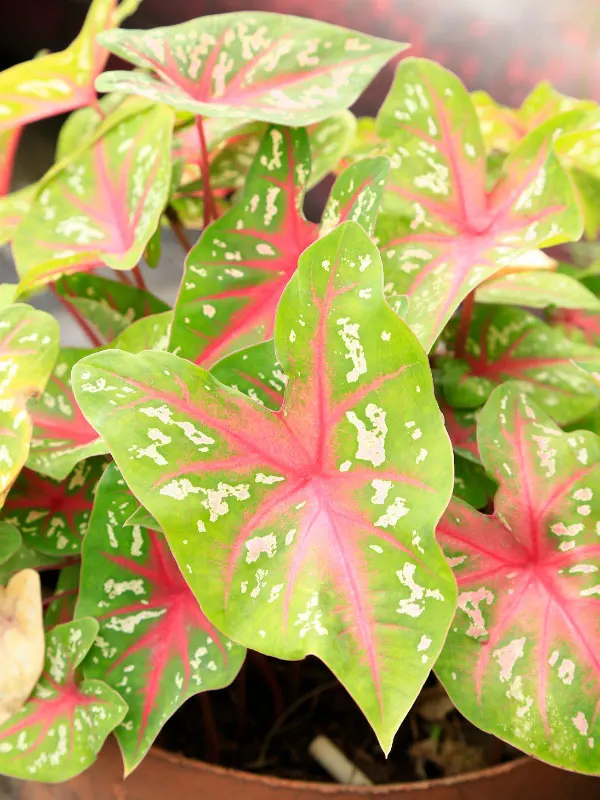
Keep in mind though that with more light, your soil will dry out more quickly, which brings us to the next topic…watering.
2. WATERING
Always ensure your pot has drainage holes so excess water can drain away freely. Always water thoroughly, and allow the top inch or so of soil to dry out before watering again.
This is a tropical plant that does not like to dry out completely, so avoid letting your potting mix dry completely. Your lower leaves will quickly turn yellow if you do this, so maintaining the proper moisture level will be important.
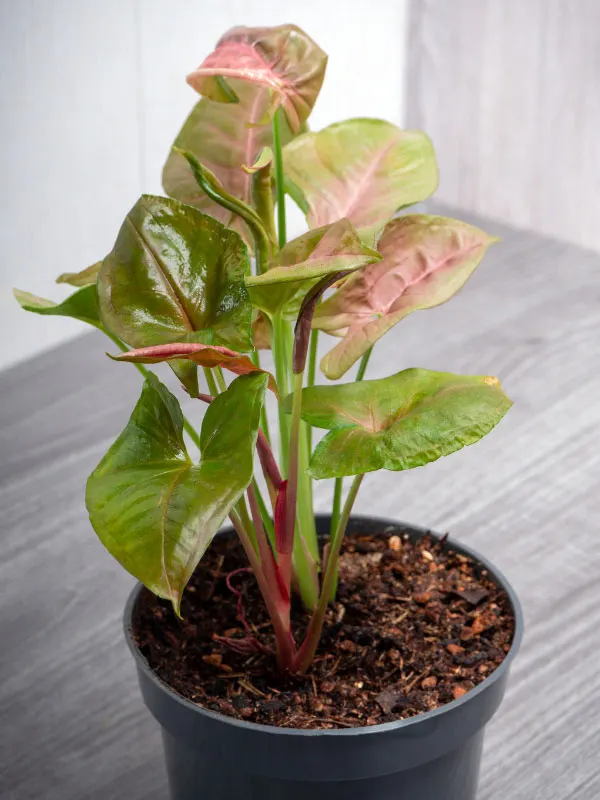
3. FERTILIZING
I love using Dyna-Gro Grow (link to Amazon) for all my tropical houseplants.
It is a premium, urea-free, complete, liquid fertilizer and I simply mix 1/4-/1/2 teaspoon per gallon of water and use it every time I water my plants.
I apply the fertilizer solution from about late Winter or early spring (at the start of the growing season) up until about October or so, or whenever growth slows down or stops.
Dyna-Gro Grow is really an amazing fertilizer and I’m confident that you will notice a wonderful difference with consistent use!
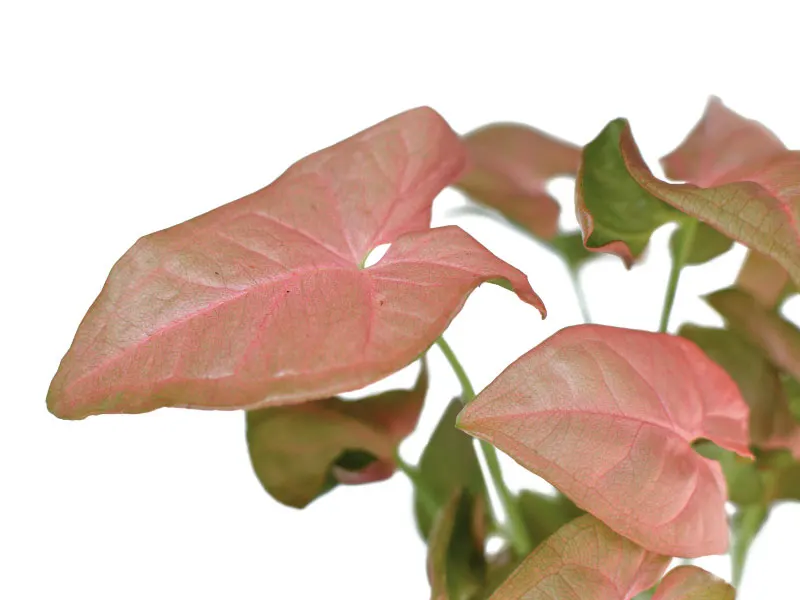
4. HUMIDITY & TEMPERATURE
Your pink Syngoniums will appreciate a humid environment, but they are pretty tolerate of average indoor humidity, especially if you are attentive to soil moisture and don’t let them dry out completely.
Try and maintain a relative humidity of 40-60% indoors for best results.
You may want to consider a humidifier, especially in the wintertime when bone-dry air can wreak havoc on your plants and your skin.
As far as temperatures go, these are tropical plants that love warmth. Minimum temperatures should not go below 55°F (13°C). A good growing range for your plants is 60-85°F (16-29°C).
Try and keep your plants away from any direct drafts coming of your air conditioner or heating vents.
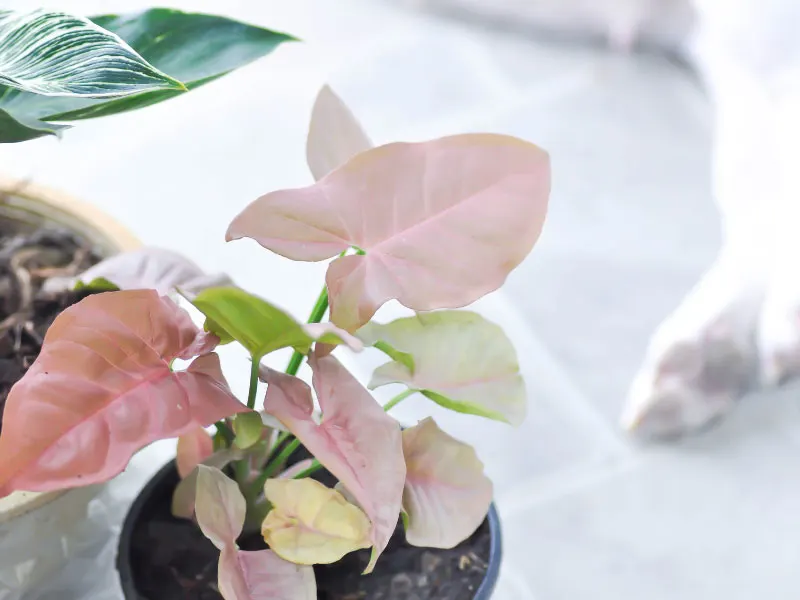
5. SOIL
A well-drained soil that is still pretty moisture retentive is perfect for your pink Syngonium plants. I typically never use most potting mixes right out of the bag without amending them to increase porosity and drainage.
If you’re using popular peat moss based mixes like Miracle-Gro or Espoma, I like to use about 3 parts of one of those mixes, plus 1 part of perlite or pumice in order to help out with drainage. This also helps to add more air to the root zone which will help reduce the chances of root rot.
Perlite and pumice are both good additions to amend potting mixes, but there are some pros and cons to both perlite and pumice.
If you’re looking for an amazing potting mix that you can use straight out of the bag for your Syngonium, check out the Rainforest Soil Blend from Oh Happy Plants. This is an amazing mix and you will get 10% off at checkout automatically if you use my link.
As far as pot size goes, when you repot, only go up one pot size. For example, if your plant is in a 4 inch diameter pot, only go up to a 6 inch diameter pot. If you go too big, the excess volume of potting mix will take too long to dry out.
And before you place it in the new, larger pot, make sure to gently tease some of the roots loose. This will help them grow into the new soil, particularly if your root ball is very tightly bound.
6. SUPPORT
If you are providing enough light and warm temperatures, your pink arrowhead vine can be quite a fast grower. Syngonium plants are actually climbers by nature, so when they start vining out, you can either leave them as is, trim them back if you want a bushier plant, or provide a climbing support and let them go wild.
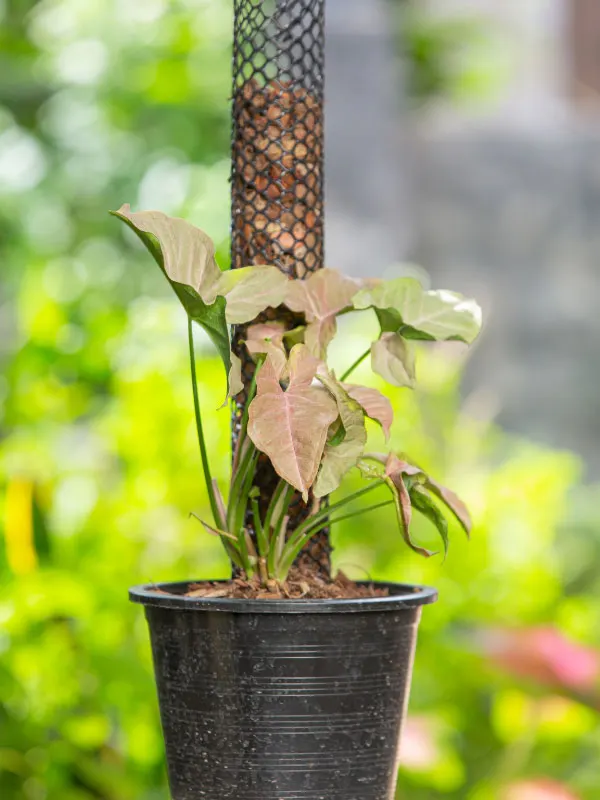
A support like a moss post would be ideal since the aerial roots will grow into the moss and the plant will climb. You will need to moisten the moss pole on a regular basis to facilitate root growth into the moss.
Over time, as the vine climbs, each new leaf should get bigger and bigger if given a support, and the mature form of the foliage will become more deeply lobed and will look pretty different from the juvenile leaves.
None of the commercially available moss posts are sufficient in my opinion, and I like to make my own. Check out my DIY moss pole tutorial. I promise that it will be far superior to anything you can purchase!
7. PINK SYNGONIUM PROPAGATION
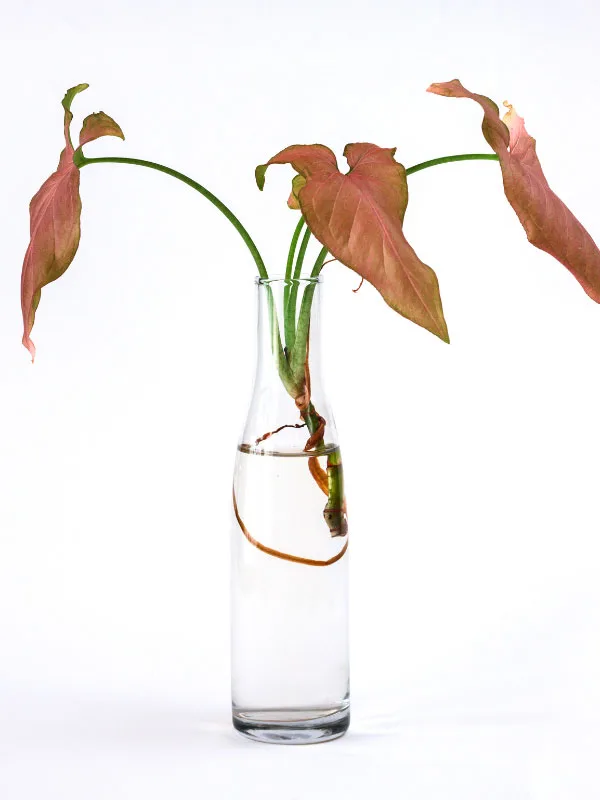
Propagating your pink Syngonium is very simple. All you need to do is make stem cuttings, and place them in water until root growth occurs.
Once the roots are about an inch long or so, you can pot them up.
You’ll need to make sure that the base of your stem cuttings have nodes. A node is simply a growth point where the leaf meets the vine. Even if there used to be a leaf at that point, but it fell off, it will still work.
Change the water once a week to keep it fresh (and replenished with oxygen), and always make sure that the nodes on the stem are underwater. You may have to top it off with water if the level gets too low in between changing the water out.
Check out my Syngonium propagation guide for more details.
PINK SYNGONIUM VARIETIES
There are a few beautiful pink Syngonium plant varieties out there, including Pink Splash Syngonium, Syngonium Neon Robusta, and Syngonium Pink Splash, as well as Syngonium Pink Allusion.
Be sure to check out my Syngonium varieties blog post that includes many of these, as well as other types that you can grow.
FREQUENTLY ASKED QUESTIONS
Why is my pink Syngonium turning green?
Your plant is probably not receiving enough light. If you have your plant too far from a window, it will likely fade in color.
Consider a location indoors that has 2-3 hours of direct sun for best results. Immediately in front of an Eastern facing window is a perfect spot for these plants.
Why are my pink Syngonium leaves curling?
The most common reason for curling leaves in an imbalance in soil moisture. Potting mix that has gone too dry, or even ones that have stayed wet to the point of root rot starting, can cause leaves to curl.
Try and maintain an evenly moist potting mix, and only allow the top inch or so to dry out before watering again.
I hope you’ve enjoyed this post on pink Syngoniums. Do you have any in your collection? Comment below. I’d love to hear!

